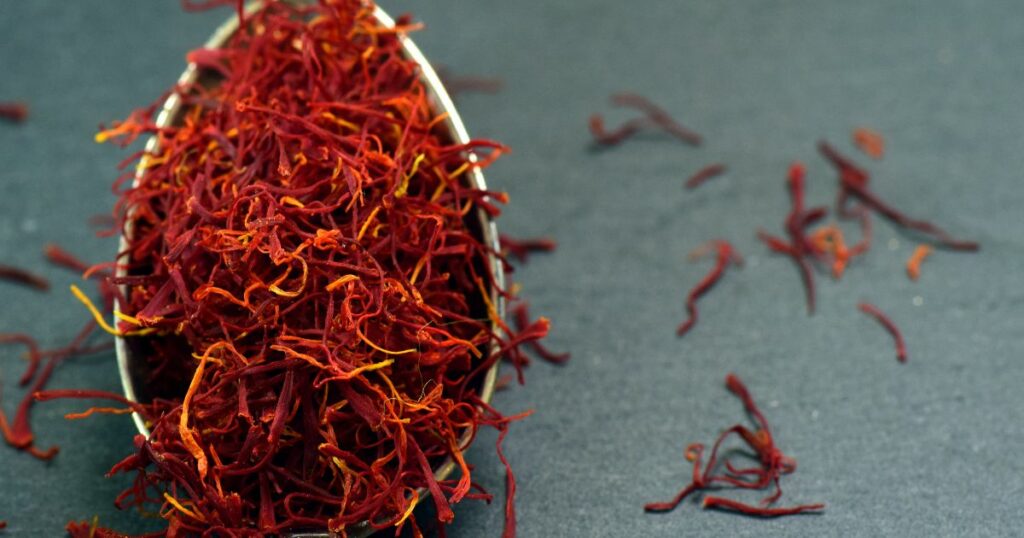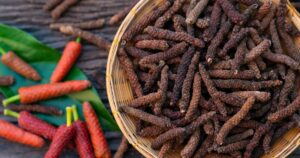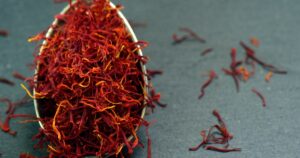
The Historical Tapestry of Saffron
The story of saffron is as colourful as the spice itself, weaving through many civilisations and cultures. Historians believe its use dates back to over 3,500 years, with the first documented instances appearing in ancient Persia. Here, it was not only a culinary staple but also a symbol of hospitality and a component in rituals and ceremonies.
The significance of saffron travelled along the Silk Road, enriching the Middle East, then reaching the shores of the Mediterranean. Ancient Greeks and Romans used it as a perfume, dye, medicine, and offering to the gods. In the medieval period, Europe’s demand for saffron surged, leading to its cultivation in Spain, France, and Italy. Saffron’s value was equivalent to gold, often leading to what was known as the “Saffron Wars,” a testament to its worth and desirability.
Why Saffron Is So Expensive
Saffron’s exorbitant price tag is a direct result of its labour-intensive harvesting process and the vast number of flowers required to produce a small amount of spice. Each Crocus sativus flower contains only three stigmas (threads), which must be handpicked and delicately dried. It takes approximately 75,000 flowers to produce just one pound of saffron spice.
Moreover, the cultivation of saffron is fraught with challenges. The Crocus sativus flower is notoriously finicky, requiring specific climatic conditions to thrive. The flowers bloom only once a year, over a brief period, necessitating immediate harvesting to ensure the stigmas retain their quality and aroma. This meticulous process, combined with saffron’s versatile applications and the increasing demand, justifies its status as the most expensive spice in the world.
Saffron in Modern Cuisine and Culture
Today, saffron continues to be a highly prized ingredient in cuisines around the globe. Its subtle earthy flavour and ability to impart a rich golden hue make it a favourite among chefs and home cooks alike. From the paellas of Spain to the risottos of Italy and the biryanis of South Asia, saffron is a unifying thread that adds depth and complexity to dishes.
Beyond its culinary uses, saffron holds medicinal properties, contributing to its enduring appeal. Studies suggest that saffron can improve mood, aid in digestion, and possess antioxidant properties, making it a valuable spice both in the kitchen and in traditional medicine.
Creative Uses for Saffron in Your Culinary Adventures
Saffron’s versatility extends far beyond its traditional uses, opening up a world of culinary creativity. For a start, infuse saffron into your baking for an exotic twist; a few threads can transform simple bread or cake recipes into golden, aromatic delights. Elevate your beverages by adding saffron to teas, milk, or cocktails, offering a luxurious depth of flavour and colour.
Adventurous cooks can experiment with saffron-infused oils and vinegars to add a subtle complexity to salads and marinades. For a visually stunning and delicious treat, incorporate saffron into rice dishes, such as pilafs or sushi, to give them a beautiful hue and unmatched taste. Lastly, saffron can be a game-changer in desserts, from saffron-poached pears to ice creams, providing a unique flavour that complements sweet profiles. Embracing saffron in your cooking not only enhances the dish at hand but also invites you to connect with the rich cultural history of this golden spice.
Conclusion
Saffron, with its golden threads, continues to weave its magic across cultures and cuisines. Its rich history, combined with the labour of love required to harvest it, cements its status as a treasure of the culinary world. As we explore the nuances of this extraordinary spice, we not only enrich our palates but also connect with the tapestry of human history, where saffron has always been a symbol of luxury, healing, and the enduring quest for beauty.
𐡸 𐡸 𐡸 𐡸 𐫱 𐡷 𐡷 𐡷 𐡷
Frequently asked questions
Saffron is a highly valued spice derived from the stigmas of the Crocus sativus flower, known for its distinctive golden color and unique flavor. It has been used for thousands of years in cooking, medicine, and as a dye.
Saffron offers a complex flavor profile described as slightly sweet, floral, and earthy, with hints of honey and the sea. Its unique taste is difficult to replicate and adds an irreplaceable depth to dishes.
The expense of saffron is due to the labor-intensive process of harvesting the delicate stigmas by hand, combined with the high number of flowers needed to produce a small amount of spice. Approximately 75,000 saffron flowers are needed to produce just one pound of saffron spice.
Saffron is used widely in culinary dishes for its flavor and color, in beverages, baking, and desserts. Beyond the kitchen, it has applications in traditional medicine for its potential health benefits and has been used historically as a fabric dye.
he price of saffron can vary greatly depending on quality and origin, but high-quality saffron can range from €3 to €10 per gram, £2.5 to £9, and $3 to $12 respectively. Always check current market rates as these prices can fluctuate.
Saffron is primarily cultivated in Iran, which produces around 90% of the world’s supply. Other countries including Spain, India, Greece, and Morocco also grow saffron, but in smaller quantities. The specific climate and soil conditions required for the Crocus sativus flower to thrive limit its production to these regions.
Yes, you can grow saffron at home if you have the right climate conditions. Saffron crocuses thrive in temperate climates and require well-drained soil and plenty of sun.
Saffron should be stored in a cool, dark place in an airtight container to preserve its flavour and aroma for up to two years.
Cheaper saffron might be adulterated with other ingredients or be of a lower quality. Pure, high-quality saffron is expensive to produce and therefore commands a higher price.
Yes, saffron has been used in traditional medicine for its potential health benefits, including mood enhancement and antioxidant properties. It’s also used as a fabric dye and in cosmetics.


